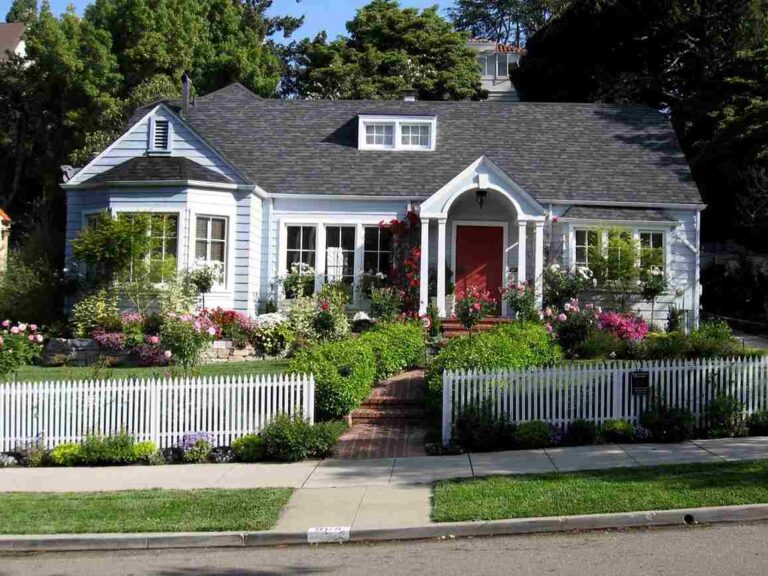Looking for a home that doesn’t drain your bank account? Man, it’s tough out there. Prices keep shooting up, but that doesn’t mean you can’t find something great that fits what you can actually afford.
The trick isn’t just finding any home—it’s finding one that’s actually worth what you’re paying.
I’ve seen too many folks rush into buying just because they’re tired of looking. Big mistake.
Then they’re stuck with a money pit or something that loses value faster than a new car driving off the lot.
Let’s talk about how to avoid that mess and find a place that’s both affordable now and smart for your future.
How To Find A Valuable Home In Your Budget?
First off, finding a good house in your price range isn’t about getting lucky.
It’s about being smart and patient.
The people who end up happy with their purchase usually did their homework.
They knew what they wanted, what they could actually pay for, and they didn’t panic when things got competitive.
Think of house hunting like detective work.
You’re looking for clues about which homes give you the most bang for your buck. And just like a good detective, you need a solid plan.
Define Your Budget and Stick to It
Your budget isn’t just what the bank says you can borrow.
That number is almost always too high.
I’m talking about what you can actually afford while still having money to, you know, live your life.
When I think about budgeting for a home, I consider how this works and relates to the overall goal.
The foundation of finding value is knowing exactly what you can spend.
Without this number firmly in your head, you’ll waste time looking at homes you can’t afford or shouldn’t buy.
To execute this properly, take your monthly income after taxes and don’t let your mortgage payment exceed 25% of that. Include taxes, insurance, and HOA fees in that calculation.
This isn’t just about getting approved for a loan—it’s about not becoming “house poor.”
A key tip here: Get pre-approved before shopping, but don’t share your max budget with sellers or their agents.
If your pre-approval is for $300,000, tell people you’re looking up to $275,000.
This gives you room to negotiate and prevents you from maxing out your budget on the purchase price alone.
Oh, and if a luxury real estate agent tries telling you that you can afford more than your budget, thank them politely and stick to your guns.
Your future self will thank you when you’re not eating ramen every night just to make mortgage payments.
Prioritize Your Needs Over Wants
Let’s get real. That fancy kitchen with the marble countertops? Nice, but not essential.
A safe neighborhood with good schools? That’s probably a need if you have kids.
Making a list isn’t just about organizing your thoughts—it’s a way to prevent yourself from getting swept away by fancy features that look great during showings but don’t actually improve your daily life.
Split your list into three categories: must-haves, nice-to-haves, and absolute deal-breakers.
The must-haves are non-negotiable.
The nice-to-haves are things you can add later or live without.
The deal-breakers are your hard no’s—like a two-hour commute or a house next to train tracks if you’re a light sleeper.
Remember this: every “must-have” you add shrinks your options and potentially raises your price point.
Be brutal with yourself about what truly matters.
You can always add a deck later, but you can’t pick up your house and move it closer to work.
Research Neighborhoods Thoroughly
When you buy a house, you’re also buying into a neighborhood.
And neighborhoods can make or break your home value over time.
Thinking about neighborhoods means understanding that location affects both your daily life and your home’s future value.
A home in a rising neighborhood might be worth more in five years than a nicer home in a declining area.
To execute good neighborhood research, look beyond just the current home values.
Check school choice even if you don’t have kids (they affect resale value).
Look at crime stats. Drive through at different times of day and different days of the week. Is it noisy at night? Packed with traffic during rush hour?
A valuable tip: Look for neighborhoods adjacent to already-hot areas.
They often rise in value next as people get priced out of the hottest spots.
And talk to local business owners—they’ll tell you if things are getting better or worse in ways real estate listings won’t show.
Consider Homes That Need Minor Updates
The ugliest house on a good block can be a gold mine.
Not talking about major fixer-uppers—just places that need some cosmetic work.
Looking at homes needing updates works because most buyers want move-in ready properties and will pay premium prices for them.
Meanwhile, homes with dated but functional features sell for less.
To make this strategy work, learn to spot the difference between cosmetic issues and structural problems. Ugly wallpaper? Easy fix. Water stains on the ceiling? Could signal expensive roof issues.
Focus on properties where the big-ticket items are in great shape: roof, foundation, electrical, plumbing, HVAC.
Get quotes for cosmetic updates before making an offer so you know exactly what you’re getting into.
One precaution: don’t overestimate your DIY skills or underestimate the time required.
That weekend kitchen update can quickly turn into a six-month project that has you cooking on a hotplate in your living room.
Work with a Knowledgeable Real Estate Agent
A good agent isn’t just opening doors for you—they’re opening doors to opportunities you might never find on your own.
This strategy works because agents see properties before they hit public listings, know which sellers might accept lower offers, and can tell you which neighborhoods are truly up-and-coming versus just being hyped.
To find a great agent, ask for recommendations from friends who’ve actually bought homes they love. Interview at least three agents.
Ask how many transactions they closed last year and what percentage of their business is working with buyers in your price range.
Find someone who listens more than they talk during your first meeting.
If they’re pushing properties before understanding your needs, they’re not the right fit.
And make sure they’re willing to tell you when a house is a bad deal—even if it means no sale for them right now.
Be Flexible with Location and Property Type
Sometimes the perfect house isn’t a house at all.
Maybe it’s a condo or a townhouse for sale. Or maybe it’s in a neighborhood you hadn’t considered.
Being flexible works because it dramatically expands your options.
More options mean better chances of finding good value rather than overpaying in a hot area.
To execute this approach, widen your search radius. Look at up-and-coming areas just outside your ideal location.
Consider townhouses if single-family homes are out of reach.
Look at older homes if new construction is too expensive.
Research future development plans before buying in a less established area.
That peaceful location might be slated for a new highway or commercial development. City planning offices can tell you what’s coming.
Monitor Market Trends and Timing
The housing market has seasons.
Literally. Spring usually has more listings but more competition. Winter can mean motivated sellers and less competition.
This strategy works because timing your purchase can save thousands.
In many markets, January and February bring lower prices as sellers who listed in fall get anxious to sell.
To execute this approach, track listing prices in your target areas for a few months before buying.
Notice how long homes stay on market and whether prices drop after listing.
This gives you a feel for what’s truly happening, not just what headlines say.
A valuable tip: Look for home inspections that have been listed for 30+ days.
They often have more negotiable sellers, especially if they’ve already purchased their next home and are paying two mortgages.
Explore Government Schemes and Loan Programs
There’s free money out there.
Well, not exactly free, but there are programs designed to help people buy homes with less money down or better interest rates.
This approach works because many buyers don’t know about all the programs available to them.
FHA loans, VA loans, USDA rural development loans, first-time homebuyer programs—these can make homeownership possible years earlier than conventional financing.
To execute this strategy, talk to multiple lenders, not just one.
Different lenders specialize in different programs.
Also check your state’s housing authority website for local programs.
Some assistance programs restrict where you can buy or require staying in the home for a certain period.
Make sure those requirements align with your plans before counting on that assistance.
Negotiate Smartly
Negotiation isn’t just about the price. It’s about contingencies, closing costs, repairs, timelines, and included items.
Smart negotiation works because the asking price is rarely the only flexible part of a real estate deal.
Sometimes sellers care more about a quick closing than getting their full asking price.
To execute good negotiation, learn what matters to the seller.
Are they in a hurry? Do they need to sell before buying their next home? Use termite inspection findings to negotiate repairs or price reductions.
A key tip: Don’t get emotionally attached during negotiations. Be ready to walk away if the deal doesn’t make financial sense. There’s always another house.
Think Long-Term Value
The final tip is maybe the most important: buy with the future in mind.
This approach works because a home isn’t just where you live—it’s probably your second home investment.
Features that might seem unimportant now could be decisive when you eventually sell.
To execute long-term thinking, consider factors like school districts (even without kids), walkability scores, lot size, floor plans, and accessibility features like first-floor bedrooms.
These timeless features hold value better than trendy finishes.
Avoid homes with quirky layouts or odd customizations that might limit future buyer interest.
That basement recording studio might be perfect for you, but it could turn off 90% of future buyers.
Conclusion
Finding a valuable home in your budget isn’t about luck—it’s about strategy.
Define what you can truly afford, focus on what really matters, look in the right neighborhoods, and be willing to see potential where others see outdated fixtures.
Remember that your first home probably won’t be your forever home.
Make a smart investment now, build equity, and you’ll have more options down the road.
Take your time, trust your gut, and don’t rush the biggest purchase of your life just because the market is hot or someone says you should.
The right home at the right price is worth waiting for.



